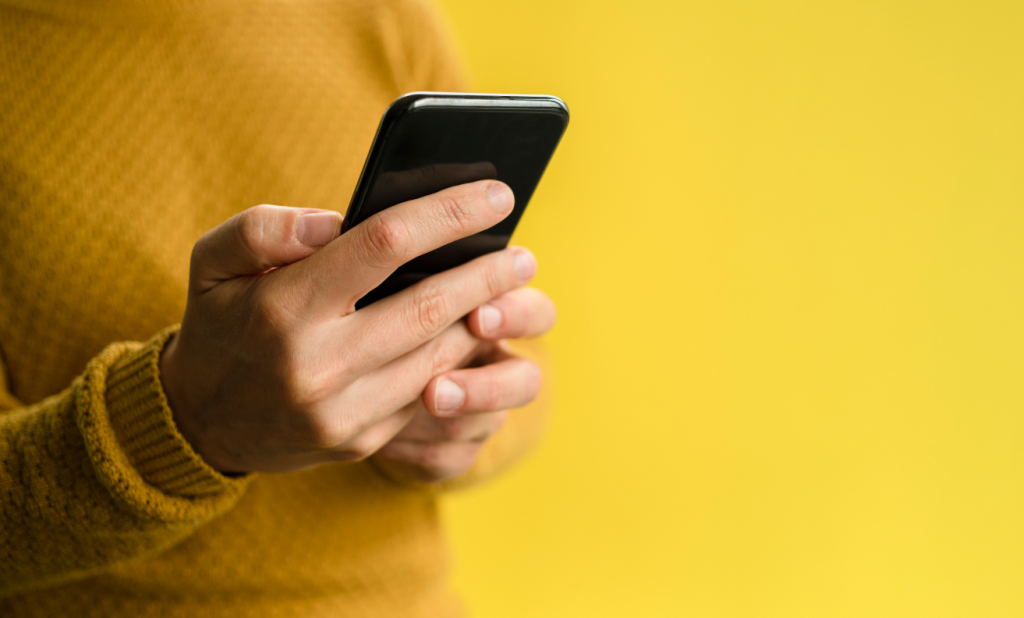Galileo: putting the smart into smartphones

Accurate positioning is what puts the smart into smartphones. Without it, your rideshare drives right past you, your food delivery ends up next door and your date is left thinking they’ve been stood up.
In other words, without accurate positioning, your smartphone can leave you looking rather dumb.
The good news is that pretty much all smartphones come equipped with a satellite navigation chip, which automatically calculates where your phone is and provides this information to your location-based apps. The bad news is that not all chips are created equal.
“Your phone determines its position by accessing the GNSS signals that come from satellites,” explains EUSPA Chief Operating Officer, Pascal Claudel. “The more signals it can access, the more accurate the positioning.”
Gaining access
So, how can your phone access more signals?
According to Claudel, the key is to have what is called a multi-constellation chip. “Multi-constellation chips collect data coming from more than one GNSS constellation, such as Galileo and GPS,” he explains.
The advantage of having a phone equipped with a multi-constellation chip is that location can be calculated using all the available satellites from both the Galileo and GPS constellations, amongst others. This is particularly helpful in urban environments where narrow streets and tall buildings can block satellite signals, rendering many mobile services useless.
“By accessing more satellites, Galileo-enabled devices definitely have an advantage – an advantage that translates into more accurate and reliable positioning for users,” adds Claudel.
Thanks to HAS and OSNMA, Galileo potential is unique
Looking forward, however, the contribution of Galileo is expected to go way beyond. Being the newest GNSS in the arena, Galileo signal’s features bring many unmatched innovations to its users. Among these, the provision of Galileo HAS (High Accuracy Service) and OSNMA (Open Service – Navigation Message Authentication) is set to be of the highest interest to smartphone users. The recently declared operational Galileo HAS, for example, will provide for accuracy below a few decimetres (<25cm horizontal in nominal conditions of use). Galileo OSNMA, a data authentication function that will be soon freely accessible worldwide, will pave the way towards robust Position, Velocity and Time information (PVT) for the Galileo Open Service users.
In the upcoming years, once chipset receivers able to make use of those innovations will be integrated into smartphones, users will benefit from both those Galileo services for free. This is expected to fuel a massive development of innovative applications. Within consumer apps, indeed, those new Galileo services will enable innovative solutions and/ or functions. The HAS increased accuracy will have a direct impact on the performance of a wide range of consumer application categories such as Gaming, Healthcare, Robotics, AR and Geo-marketing. Mobile payments and enterprise workforce management and tracking solutions are some of the areas that will benefit from OSNMA.
Overall, the provision of Galileo HAS and OSNMA is expected to further narrow the distance between consumer and enterprise apps, with professional users across several verticals being able to perform directly in their smartphones activities and tasks once possible only with dedicated devices. The enhanced positioning capabilities provided by Galileo will also further consolidate the role of the smartphone as one of the key devices able to establish a bridge between the digital and the physical worlds in the metaverse and digital twin technologies.
Find out if your smartphone is Galileo enabled
EUSPA wants everyone to benefit from the enhanced positioning accuracy and reliability that Galileo provides. That’s why we’ve been working tirelessly to ensure that the world’s leading chip manufacturers include Galileo in their products. We’re also supporting the industry’s development of such chips through our Fundamental Elements funding mechanism.
As a result of this work, over 3.9 billion Galileo-enabled smartphones have been sold worldwide. You can see if yours is one of them by visiting www.useGalileo.eu.
There are also a number of apps you can use to check where your positioning data is coming from. For example, the GPSTest application, which can be downloaded for free from Google Play, provides users with real-time information about which satellites are providing positioning data to your phone. If the Galileo satellite on the user screen (indicated by the EU flag) has a ‘U’ next to it, then you know your phone is using Galileo to calculate its position at that very moment.
Similar applications are available for iOS users such as here.
Accuracy matters more than ever
Considering the plethora of location-based services out there, many of which we use on a daily basis, accuracy matters more than ever.
“Thanks to the added accuracy that Galileo brings to smartphones everywhere, you can rest assured that your food will come before it goes cold, that your rideshare will actually arrive when and where it’s supposed to, and that you won’t miss a potential match the next time you swipe right,” concludes Claudel.
Media note: This feature can be republished without charge provided the European Union Agency for the Space Programme (EUSPA) is acknowledged as the source at the top or the bottom of the story. You must request permission before you use any of the photographs on the site. If you republish, we would be grateful if you could link back to the EUSPA website (http://www.euspa.europa.eu).